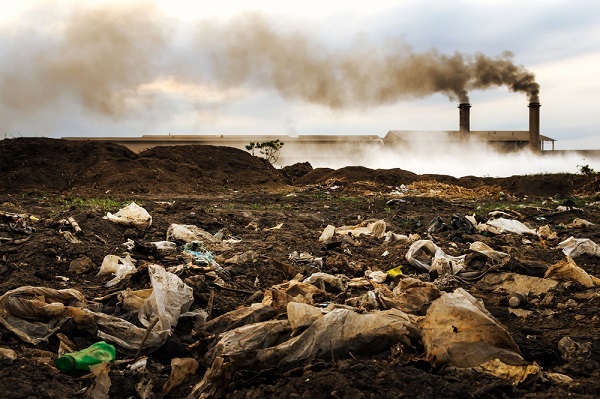Chemical World: Dangers Lurk in the Environmental Market

By: Will Jones
As other markets ebb and flow in terms of rates and capacity, environmental liability insurance often remains unaffected, which leads to environmental insurance agents to ask: what about us?
“Typically, environmental liability is the last to enter a hard market and the last to enter a soft market—we kind of just hang back,” says Gina Jones, vice president, director, Environmental Programs, Burns & Wilcox. “And that’s true to what we’re seeing now, we’re seeing rates change in other lines of business, but environmental is steadfast. It’s still flat.”
Moreover, due to the relatively large number of players in the market, “the carriers who are trying to move the needle a little bit and increase rates are hindered by those that are not,” Jones says.
Certain classes are beginning to harden though. “As far as the regular environmental products are concerned, commercial auto is hardening up,” explains Chris Bunbury, president, environmental strategist, Environmental Risk Managers, Inc. in Moline, Michigan. “But I think commercial auto in general has been in a hard market cycle and we’re just experiencing that as part of the overall market condition.”
“Mold claims have been accelerating and pricing is starting to harden slightly in that area,” continues Bunbury. “Instead of just going with a standard deductible like if it’s a habitations facility, some carriers are choosing to go in with a per room deductible as a way to address it.”
“It’s the same thing with restoration contractors, they’re not as desirable as they have been in the past because of the claims activity that’s been building in regard to mold,” he adds.
The hottest issue in environmental liability is the continuing fallout from the widening legal nightmare over Roundup weedkillers. “Carriers are putting on exclusions for that particular chemical. We’re seeing exclusions on pesticide manufacturers and for people who are clearing land and things of that nature,” Jones says. Depending on the industry, “we can negotiate that back because, of course, we don’t want to leave our insureds exposed,” she says.
Bayer AG recently acquired Roundup manufacturer Monsanto in a deal reported to be worth more than $60 billion. “It’ll be interesting if they can survive. It’s still early in the litigation but there are around 16,000 people in the litigation line,” Bunbury says. “And then, people are just beginning to become aware of PFOAs chemicals.”
PFOAs could easily become the next major litigation problem. Also known as “forever chemicals,” they belong to a class of more than 3,000 compounds, which are useful to manufacturers for their ability to repel water and act as a fire retardant.
The problem is: “It’s virtually everywhere,” Bunbury says. “Michigan has been identified as the No. 1 state so far with the most PFOAs contaminated sites so far with 150, but they expect that to grow to about 11,000 contaminated sites.”
PFOAs are linked to a variety of health problems, from cancer to high blood pressure to gout. The Center for Disease Control says that scientists are still learning about the health effects of exposures to mixtures of PFOAs and “some, but not all, studies in humans with PFOA exposure have shown that certain PFOAs may affect growth, learning, and behavior of infants and older children; lower a woman’s chance of getting pregnant; interfere with the body’s natural hormones; increase cholesterol levels; affect the immune system; and increase the risk of cancer.”
In Bunbury’s hometown, Rockford, Michigan, there’s a situation with Hush Puppies, the shoe manufacturer, where they were using a PFOA chemical as a water repellent in shoes. “Then, they were discarding it as a waste product on landfill which contaminated some of the community’s water supply,” Bunbury says. “That’s just one example.”
“We saw a renewal for a municipal airport and the carrier wanted to put a PFOAs exclusion on there because of the firefighting foams,” Bunbury continues. “I told them that if they were going to do that I’d need to go out into the market. They agreed to leave it off but don’t be surprised if we start to see that a little bit more”
“People are just becoming more and more aware of what’s going on out there,” he adds. “As more people become aware, more of these things are going to start to surface.”
Will Jones is IA senior editor.










